The polarity of the Input Bias current can't simply be derived from the simplified schematics in the data-sheet. Often the implementation internally is very different than what is shown. Parasitic elements are not shown for example, which may be the dominant (in this case) mechanisms for leakage current.
Second order effects, like dealing with leakage current is very important for getting the desired results and doing a complete design in op=amp applications. There is one assumption that you must make, which isn't explicitly stated in any datasheet; that the input structures are laid out in such a way that they are as matched as possible. In fact if the designer (layout wise) does not do the layout for matching the chances are that the device will probably have very low yield). I couch my terms here using "probably" simply because I don't want to pretend that I know how ALL designs flow, I can imagine some designs and have had some experience where this is violated intentionally. But this matching assumption applies in most cases.
So what you need to do is, make sure that your external circuitry is also as matched as possible. That means that the input resistance for the + and - terminals are the same so that when the "matched" leakage currents interact with the external components that the common mode voltage generated shifts in the same direction together (remember that the input stage is a differencing circuit.
This philosophy applies to matching the TCR (Temperature coefficient of resistance) and indeed for really precise designs one typically aligns the external components like resistors in the same direction (Ideally - across the thermal gradient on the board - but it is more important that the direction match). In fact this is one of the things I look for in a design review of a PCB "Has the layout taken into account factors to ensure that the components experience the same conditions?".
So the sign of the \$I_IB\$ is less important that the magnitude of the effect so be taken into account of with the error budget of the design. In other words, keep things symmetrical and don't worry about the sign.
